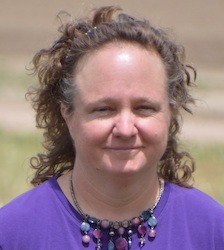Collaborative Testing’s Impact on Application Quality

Software testing teams can pack the most power when manual and automated testers work in coordination. See some tips for this.
Exceptional software testing involves a development team made up of various roles. Roles include product managers, UI/UX designers, developers, manual testers, and test automation engineers or software development engineers in test (SDET). Each role performs distinct duties, all in the name of creating and delivering a software application product customers love to use.
For many test teams, having manual and automated tester roles complicates and challenges testing efficiency. The good news is that manual and automated testers can work together and accomplish valid and high-quality testing for a software development team. Or, they can spend significant time going back and forth and pointing fingers on who should test what, when and how. Getting along with competing team members in testing can be a challenging task. It’s not simply common sense but a strategic and goal-driven effort to make testing credible, valid and efficient. This article provides tips for using collaboration between testers to improve application quality and the customer experience.
What Is the Difference Between SDET and QA Tester?
Manual testers typically develop test cases in a written step-by-step format based on user stories, acceptance criteria, requirements or design specification documents. Manual testers often test using exploratory methods that may or may not be documented for more rapid functional, regression and integration testing. Manual testing also involves testing backend operations, including messaging, APIs or data transfer methods.
Manual testers tend to perform feature and functional testing as developer’s code tasks. Manual testers create test suites for smoke, sanity and regression testing. Many also perform database testing or validate data as it moves through an application. Most manual testers have some knowledge of test automation, but it’s not their strongest skill.
SDETs create automated test frameworks and test suites for regression, integration, security and performance testing. A skilled SDET uses test automation tools and code. With coding experience and proficiency, an SDET helps developers create unit tests and easy-to-maintain automated regression tests. SDETs often also develop CI/CD pipelines on DevOps or QAOps teams.
Advantages of Building a Partnership Between Manual and SDET
Collaboration between SDETs and manual testers is vital to the productivity and functioning of the development team. When SDETs and manual testers work together effectively, significant testing time is saved while also adding business value. Instead of executing the same application functions multiple times, testing is divided so there’s not a duplication of effort.
As a manual tester, get together with SDETs or test automation engineers and determine which tests are best run with each method. Depending on the complexity of the application, manual testers may be executing complex customer workflows instead of repetitive functional testing that is effectively achieved through test automation. Testers work together to determine which tests to automate and which to test manually. Collaboration also creates test suites with testing patterns that incorporate different points of view for improved test coverage.
When testers collaborate, the test suite becomes more valuable to the business and its customers. More efficient testing still identifies defects but without wasting time or effort. Additionally, collaboration between manual and test automation testers creates a supportive testing team. A supportive testing team enables cross-training and work coverage during holidays and vacations, so testing quality never misses a beat.
Improving Testing Coverage for Higher User Satisfaction
When testing teams work together to build manual and automated test suites, the depth and breadth of test coverage improves. For example, rather than each tester executing the same types of tests, collaborative testers can reduce the workload by only testing once. When testers cover the same functionality repeatedly, it doesn’t improve application quality. Working together creates better-designed testing suites for efficient and effective testing.
Manual and SDET collaboration generates faster testing results that help teams fix defects without resorting to hair-on-fire crises or rounds of hotfixes to correct defects. When working collaboratively, testers create allies for application quality. The more team members are serious about customer-facing application quality, the better the result for customers.
Tester collaboration also builds a strong team that works smoothly together. Cross-training improves and helps the entire testing team build skills. Manual testers may want to learn coding, and there’s no better place to start than working with an SDET partner. Testing quality and general team functions like vacation and holiday work coverage improve. A manual tester paired with an SDET can support each other’s work while one is out of the office. Coverage builds team skills and keeps testing moving forward.
A strong collaboration between manual and test automation results in an application that better serves customers. By leveraging both test automation and manual testing, teams can test both more effectively and efficiently. By strategically managing test development, testing teams create reliable and valid tests for all the technical structures within an application. Defects are identified faster, and automated test maintenance needs are reduced. The better the quality, the more likely a positive customer experience. More positive customer experiences mean more business revenue. Make your application the best it can be with a collaborative testing team.

Amy Reichert
A QA test professional with 23+ years of QA testing experience within a variety of software development teams, Amy Reichert has extensive experience in QA process development & planning, team leadership/management, and QA project management. She has worked on multiple types of software development methodologies including waterfall, agile, scrum, kanban and customized combinations. Amy enjoys continuing to improve her software testing craft by researching and writing on a variety of related topics. In her spare time, she enjoys gardening, cat management and the outdoors.

